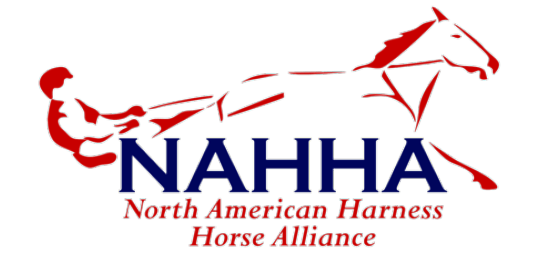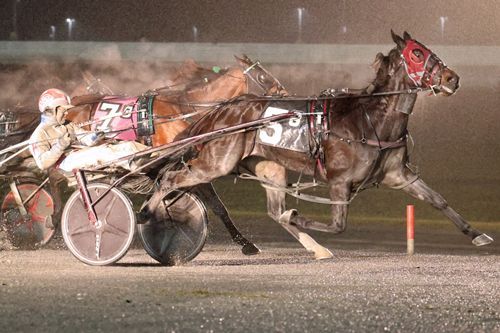North American Harness Horse Alliance Opposes Horseracing Integrity and Safety Act
from the NAHHA • October 23, 2020
"If passed, HISA will devastate the standardbred racing business nationwide."

Background
The North American Harness Horse Alliance (NAHHA) is an alliance of associations from across North America that have been established to represent the interests of participants involved in the breeding, training, and racing of Standardbred horses.
Honest, hardworking, and reputable North American Harness Horsemen are unhappy with the status quo. They want a level playing field and want to take care of their equine partners appropriately as directed and managed by their veterinarian. That care requires therapeutic medications that are beneficial to their equine partners, that protect their health, and ensure longevity.
Throughout the years the Jockey Club backed Racing Medication and Testing Consortium (RMTC) and Association of Racing Commissioners International (ARCI) have spent time and money eliminating and criminalizing beneficial therapeutic medications that are not detrimental to equine athletes. These tactics have been aided by misleading terminology talking about “drugging” or “positive tests” and painting a false picture of widescale abuse.
Accredited labs have honed testing capabilities down to nanograms and picograms, the rough equivalent of finding a grain of sand in an Olympic-sized swimming pool. Significantly more often these “positive tests” are therapeutic overages, endogenous substances (naturally occur in a horse), or environmental contaminates in a barely calculatable quantity that cast a shadow of doubt and accusation. The reality is a grain of sand in a 1,000-pound racehorse does not induce a performance enhancing effect.
As that has occurred, the nefarious among the horseman’s population have been pushed further into the illegal, black market to serious and significant substances and methods that are not only illegal, but unfortunately also highly detrimental to our equine partners. The nefarious minority have taken up and consumed 95% of the time and money of regulators and others to the detriment of the honest, hardworking, and reputable North American Harness Horsemen that do play by the rules for the sake of our equine partners. Every industry has this sort of framework, it is not unique to racing. There are always those that cannot fly straight no matter the industry. Robert Rubin ex-Chairman at Goldman Sachs, Kenneth Lay and Jeffrey Skilling of Enron fame, Richard Scrushy ex-CEO of Health South, Dennis Kozlowski, ex-CEO of Tyco, and in a slightly different vein, Harvey Weinstein.
The United States Trotting Association (USTA) has pursued a tireless and costly crusade to differentiate the standardbred racehorse from a thoroughbred racehorse. Standardbreds have a distinct gait, racing style, breed characteristics, and longevity. Initially a Member of ARCI, the USTA pursued an agenda to separate and distinguish standardbreds and harness racing, but by 2013 after a million-dollar investment, they pulled out of ARCI.
By 2015, the USTA put together distinguished scientists, regulatory pharmacologists, professors and practicing veterinarians to form the Harness Racing Medication Committee. By the end of 2018, the USTA’s scientific team had published research showing that the RMTC threshold levels for clenbuterol and betamethasone (therapeutics) were not based upon science or manufacturer’s recommendation, but rather arbitrary policy. The USTA presented their HRMC standardbred specific research to the RMTC, requesting harness racing specific regulation. The USTA was given an audience, but the RMTC acting as the ARCI’s decision maker, rejected all facts, science, and separate treatment. A continuation of the narrative and treatment that occurred while spending millions as an RMTC/ARCI Member with a seat at the table. The RMTC/ARCI thoroughbred initiatives were not up for discussion or modification. Harness racing as a business and completely different breed, would be forced to conform to the thoroughbred standards, protocols, and model rules.
Since 2015 through several different precursor Bills to HISA, the USTA has lobbied countless hours in Washington D.C. seeking separate and distinct federal regulation for standardbred racehorses and harness racing. As with the RMTC/ARCI model rules prior, the thoroughbred backed legislation was not up for discussion or modification to accommodate harness racing. Harness racing as a business and completely different breed would be forced to conform to thoroughbred standards, protocols, and now federal regulation.
The National Horseman’s Benevolent and Protective Association (31,000 members), AQHA (221,000 members), the National Association of Racetrack Veterinarians, and others oppose HISA. The USTA has been the most active and aggressive in defense of our industry spending $450,000 with Gibson Dunn, the firm that successfully overturned the Professional and Amateur Sports Protection Act (PASPA), resulting in sports wagering legalization by states nationwide.
Horseracing Safety and Integrity Act Opposition
HISA establishes the Horseracing Anti-Doping and Medication Control Authority (“Authority”) an independent, private non-profit corporation granted civil enforcement powers only with responsibility for developing and administering an anti-doping and medication control and safety program for (1) Thoroughbred, Quarter, and Standardbred horses that participate in horse races; and (2) the personnel engaged in the care, training, or racing of such horses.
The entire HISA regulatory body lacks horse knowledge or experience on a more than 2-1 ratio. The Nominating Committee, Authority Board, Antidoping and Control Committee, and Racetrack Safety Committee are made up of 30 Members. 21 of those Members cannot be anyone with a connection to horses or a connection to horses through a commercial or familial relationship. The remaining 9 Members have equine knowledge, but no more than one of them can come from any individual equine discipline. Standardbred racing will be fortunate to have 1 seat on a 30 Member Authority.
Within 48 hours after passage from the effective date, everyone is a Covered person and is required to register. There is no opt-out. Includes trainer, owner, breeder, jockey, racetrack, veterinarian, and “person (whether legal and natural) licensed by a racing commission”, and their agents, assigns, employees, and other horse support personnel.
Within 48 hours after passage from the effective date, any Covered person must provide any items requested by the Authority for the purpose of increased racehorse welfare.
Within 48 hours after passage from the effective date, HISA applies to all horses that have had their first timed and reported work at a training center or racetrack until the Authority is officially notified of the horse being retired.
Within 48 hours after passage from the effective date, horses must be raced free from the influence of medications, other foreign substances, and methods. This includes Lasix. There is no regard for therapeutic care.
Within 48 hours after passage from the effective date, veterinarians are required to treat horses with “the minimum necessary to address the diagnosed health concerns identified during the examination and diagnostic process.”
Within 48 hours after passage from the effective date, veterinarians are to ignore their professional training, manufacturer’s instructions and recommended dosage for effective treatment.
Within 48 hours after passage from the effective date, treatment or administration of any substance or method by a veterinarian is required to be reported to the Authority.
Within 48 hours after passage from the effective date, HISA expands medication and testing violations to include medications, other substances, or methods that affect performance.
Within 48 hours after passage from the effective date, there is no burden on the regulator to prove performance enhancement and an unfair advantage to the detriment of the public wagering on that race. A trainer is absolutely liable with no defense for any impact or change in a horse’s performance, good, bad, or indifferent.
Within 48 hours after passage from the effective date, medication, testing, and enforcement rules will come from the strictest among the, (1) International Federation of Horseracing Authorities screening limits for urine May 2019, (2) International Federation of Horseracing Authorities International screening limits for plasma May 2019, or (3) World Anti-doping Agency International Standards for Labs from 11/12/2019, or (4) ARCI Model Rules v.9.2 or ARCI Penalty Model Rules of Racing v.6.2.
Within 48 hours after passage from the effective date, HISA permits In Competition and Out of Competition Testing without any advance notice.
Within 48 hours after passage from the effective date, HISA implements the exact same mechanism in place now in any State for enforcement, civil charges, civil investigation, civil subpoena powers with civil sanctions as a penalty. Penalty provisions provide for participant suspensions (up to a lifetime), purse payback, monetary fines, and finish placing disqualifications.
HISA does not include federal enforcement of any type. No criminal investigation techniques (i.e., prospective wiretaps), criminal penalties, or criminal sanctions like jail time. No Department of Justice, Federal Bureau of Investigation, Drug Enforcement Agency, or Food and Drug Administration involvement. The FTC will exercise enforcement for horses sold, if the horse was administered bisphosphate before turning four years old or the horse has been administered any other substance or method that has a degradation effect on a horse before it is sold.
The cost for HISA cannot be calculated. Within 48 hours after passage from the effective date, HISA funding will be determined by the “Authority” itself. Not only does the Authority give themselves a blank check for initial, continual funding, and registration fees paid by “covered persons”, they also have absolute authority to take out loans of any dollar amount that must be paid back pro-rata by each State and State Racing Commission on a yearly basis. In addition to those unknown costs, they have a blank slate for the dollar amount of civil fines they can levy against violators.
HISA forces the expensive duplication of the same civil system in place for regulation and enforcement at the state level. If passed, HISA will devastate the standardbred racing business nationwide.
The Empire Report – Friday, December 19, 2025 – Race Analysis
The Empire Report – Thursday, December 18, 2025 – Race Analysis
The Empire Report – Wednesday, December 17, 2025 – Race Analysis
The Empire Report – Tuesday, December 16, 2025 – Race Analysis
The Empire Report – Monday, December 15, 2025 – Race Analysis
The Empire Report – Friday, December 12, 2025 – Race Analysis
The Empire Report – Thursday, December 11, 2025 – Race Analysis
The Empire Report – Wednesday, December 10, 2025 – Race Analysis

